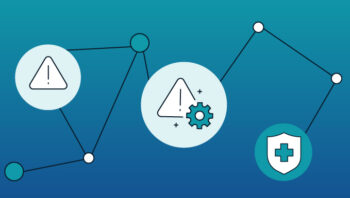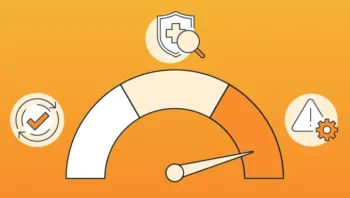
BlogTPRM
Top 10 Healthcare Supplier Risk Management Challenges Facing Providers in 2025
3 Minute Read
Read Top 10 Healthcare Supplier Risk Management Challenges Facing Providers in 2025Uncategorized
By Cliff Baker | December 21, 2020
A groundbreaking cyberattack against the Texas-based IT network solutions provider SolarWinds has resulted in unauthorized access to a wide range of government and private sector organizations. The extent, scale, and impact of the attack are still being assessed; however, initial indications are that the attack will have lasting security impacts for months and possible years to come.
This attack exposes the dependencies that organizations have on their supply chains and the security risks that can be introduced through third- and fourth-party access to networks and information. According to a security advisory issued by SolarWinds, “this attack was very sophisticated supply chain attack, which refers to a disruption in a standard process resulting in a compromised result with a goal of being able to attack subsequent users of the software.”[1] SolarWinds and the US Cybersecurity and Infrastructure Security Agency (CISA)[2] have issued alerts and guidance that should be reviewed for all affected organizations.
This blog provides a summary of the attack as well as recommendations for organizations to assess and take mitigation actions relative to this attack for their own organizations and the third- and fourth-party vendors in their supply chain that may be affected.
The sophisticated attack leverages a compromise of the SolarWinds Orion software updates to create a backdoor into the networks that leverage the popular network monitoring solution. The malicious code was embedded in SolarWinds software updates and pushed down to unsuspecting organizations from March through June 2020. The Orion platform is reportedly used by over 18,000 organizations in the public and private sectors.
The attack is being attributed Russian state-sponsored actors by several sources, although a formal investigation is still underway.
Initial indications are that the majority of impacted entities are US federal and governmental entities. However, several high-profile private sector organizations including FireEye, Microsoft, and VMWare have been impacted.
Microsoft, in particular, has taken aggressive response and mitigation measures following the detection of the attack. Specifically, they have removed the digital security certificates used in the attack, which essentially instructs Windows-based devices not to trust communications from the attackers. They also took over one of the primary network domains used in the attack, which is referred to as creating a “sinkhole” to redirect traffic away from malicious actors.
The following is a checklist of activities to perform if you leverage vendors that may be impacted by the SolarWinds attack:
CORL Customers Only:
Assessment Criteria for Vendors (All Organizations):
We will continue to monitor the attack and provide updates as this situation unfolds. Contact us to learn more about the attack and ways you CORL can protect your organization and third-party supply chain.
[1] https://www.solarwinds.com/securityadvisory
[2] https://us-cert.cisa.gov/ncas/alerts/aa20-352a
[3] https://www.solarwinds.com/securityadvisory
 Cliff Baker
Cliff Baker
Chief Executive Officer
Cliff is an industry leader and luminary in healthcare information technology, privacy, and security with more than 25 years of experience. Through his dedication to the healthcare sector and passion for tackling its most challenging risks, Cliff has created solutions for cybersecurity, compliance, and risk management that are actively leveraged by the world’s most recognized payors, providers, and vendors. Cliff started his career with PricewaterhouseCoopers (PwC) where he established and led the firm's first dedicated healthcare security practice. He later became the lead architect of the HITRUST framework, the most broadly adopted healthcare security and privacy framework in the industry. Cliff is a sought-after speaker and published author whose voice continues to elevate security standards throughout the healthcare ecosystem.
Related Posts

BlogTPRM
By CORL Technologies | August 14, 2025
3 Minute Read
Read Top 10 Healthcare Supplier Risk Management Challenges Facing Providers in 2025BlogCompliance
By CORL Technologies | June 24, 2025
5 Minute Read
Read Unlocking Vendor Assurance: A Deep Dive into CORL Technologies’ Assessment Suite
BlogTPRM
By CORL Technologies | May 19, 2025
2 Minute Read
Read More Than a Checkbox: Why Right-Sizing Vendor Risk Remediation Is the Key to Smarter TPRM